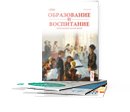Task-Based Language Teaching (TBLT) has gained prominence as a pedagogical approach that prioritizes meaningful communication through task completion. This paper explores the theoretical foundations and practical applications of TBLT, with a focus on its role in second and foreign language acquisition. The study outlines the essential elements of TBLT, including needs analysis, task sequencing, assessment, and methodological implementation. The research further examines Ellis’s definition of a task, emphasizing meaning-focused activities, learner engagement, and outcome-oriented instruction. The paper also reviews Willis’s three-phase task-based model, detailing its structure: the pre-task phase, task cycle, and language focus. The study highlights the benefits of TBLT in fostering communicative competence and authentic language use, offering an adapted framework based on the contributions of David Nunan and Jane Willis.
Keywords: Task-Based Language Teaching, communicative approach, second language acquisition, pedagogical tasks, task sequencing, language learning framework, speaking development, assessment in TBLT, learner engagement.
Task-Based Language Teaching (TBLT) represents a pedagogical framework for the theory and practice of teaching second or foreign languages. This approach emphasizes teaching, learning, and assessment through tasks, rather than isolated grammar forms, to enhance the functional use of language. As detailed by Long, the development of a fully task-based course begins with a comprehensive needs analysis to identify the learners’ authentic language needs [1, p. 10]. Based on this analysis, target tasks are defined and categorized into specific task types. Subsequently, pedagogical tasks are designed to address these needs.
The next stage involves sequencing these pedagogical tasks within a syllabus that moves from cognitively simple to more complex activities, developing supporting materials such as building block tasks, and allowing the instructor to determine the methodological approach for task implementation. Assessment in TBLT is integrated and performance-based, employing criterion-referenced measures that are directly aligned with the target tasks identified in the initial needs analysis. Additionally, the final phase of a comprehensive task-based course includes a program-wide evaluation to measure its overall effectiveness.
Definition of a Task
Ellis identifies four essential criteria that an activity must meet to qualify as a task in language teaching:
— The activity must primarily focus on meaning;
— it must involve a gap, requiring learners to undertake specific actions to complete the task;
— learners must rely on their own resources, both linguistic and non-linguistic, to fulfill the task;
— the task must have a tangible outcome, signifying successful performance beyond mere language demonstration [2, p. 223].
These principles underscore the centrality of meaning, learner engagement, and practical outcomes in TBLT, ensuring that tasks facilitate authentic and effective language acquisition.
Willis outlines a structured framework for task-based teaching, consisting of three sequential phases, which is showed in Figure 1, the pre-task phase, the task cycle, and the language focus [3, p. 31].

Fig. 1. The task-based learning framework
The pre-task phase serves as an introduction to the topic and involves activities designed to activate learners’prior knowledge or introduce new, relevant vocabulary and phrases. During this phase, the teacher ensures that learners comprehend the task instructions and understand the expected outcomes they will present during the report stage. The next stage is the task cycle , which comprises three components: the task itself, planning, and the report. During the task, learners work individually, in pairs, or in groups to complete the activity, while the teacher assumes the role of a monitor, providing guidance as needed. Planning time, which may follow the task, allows learners to prepare for the report, with the teacher acting as a language advisor by offering support in organizing their thoughts and refining their language use. In the report phase , learners present their task outcomes, and the teacher facilitates the process by coordinating presentations and providing feedback on both the content and linguistic form. The final phase, language focus , includes two subcomponents: analysis and practice. In the analysis stage, the teacher highlights specific linguistic forms, words, and phrases used during the task, focusing explicitly on form and usage. This is followed by the practice stage, where learners engage in targeted exercises, such as memory challenges, dictations, or drills, to reinforce the language forms identified during analysis. Additionally, the teacher may have learners repeat the task to consolidate their learning and improve performance [3, p. 31].
Therefore, an adapted model, which is showed in Table 1, has emerged based on the work of researchers such as David Nunan and Jane Willis, who have made significant contributions to the development and popularization of the task-based learning (TBL) approach, using the example of the 8 th grade of students [4].
Topic: My Dream Vacation
Table 1
Task-Based Learning (TBL) for a speaking lesson
|
Stage |
Stage aim |
Ideas for tasks |
|
LEAD-IN OR PRE-TEXT |
To set the context and generate interest; To orientate Ss to the topic. |
Students look at pictures of different travel destinations and discuss what they see; In pairs, they answer questions about their past vacations or dream destinations; Teacher provides key words (e.g., adventure, beach, city, explore) and students predict the topic of the lesson. |
|
NOTICING 1 |
To provide a model for Ss to follow; To expose Ss to the type of text they are expected to produce. |
Students listen to a short dialogue where two people talk about their dream vacations and answer a gist question (e.g., Where do they want to go and why?); Teacher models the speaking task by sharing their own dream vacation, and students check if their predictions from the Lead-in stage were correct. |
|
NOTICING 2 |
To focus on useful language or speaking strategies students might need for the task |
Students receive a transcript of the model conversation with sentences jumbled and put them in the correct order; They listen again to identify useful phrases (e.g., «I’d love to go to»..., «It would be amazing because»..., «One thing I really want to do there is»...); Teacher provides a list of useful expressions, and students categorize them based on function (e.g., expressing desire, giving reasons, making comparisons). |
|
TASK PREPARATION |
To give Ss time to prepare for the speaking task |
Students brainstorm and take notes about their dream vacation using prompts on the screen (e.g., Where would you go? Why? What activities would you do?); They practice using some of the useful expressions identified in the previous stage. |
|
TASK PERFORMANCE |
To complete the speaking task |
Students work in pairs or small groups to present their dream vacations. They take turns asking follow-up questions to each other. |
|
FEEDBACK |
To raise awareness of how students can upgrade their speaking |
Teacher provides feedback on fluency, accuracy, and use of useful language; Teacher writes good examples and common errors on the board and asks students to suggest improvements; Discussion about how well students used the expressions from Noticing 2. |
|
TASK REPETITION (OPTIONAL) |
For the students to do the task again |
Students switch partners and repeat the task, trying to improve based on feedback. |
The research underscores the effectiveness of Task-Based Language Teaching as an approach that integrates real-world tasks to promote authentic language use and communicative competence. Unlike traditional grammar-focused methods, TBLT provides learners with meaningful opportunities to develop fluency and problem-solving skills through structured task completion. The outlined framework highlights the importance of needs analysis, sequencing tasks according to cognitive complexity, and performance-based assessment to ensure optimal language acquisition. By analyzing the principles proposed by Long, Ellis, and Willis, the study confirms that task-based instruction enhances both linguistic proficiency and learner autonomy. The proposed adaptation of TBLT reinforces its applicability in modern language education, emphasizing student-centered methodologies that align with contemporary pedagogical standards.
References:
- Long M. H. Second language acquisition and task-based language teaching. — West Sussex, UK: Wiley Blackwell, 2015. — 456 p.
- Ellis R. Task-based language teaching: Sorting out the misunderstandings // International Journal of Applied Linguistics. — 2009. — Vol. 19. — P. 221–246.
- Baralt M., Morcillo Gómez J. Task-Based Language Teaching Online: A Guide for Teachers // Volume 21, Issue 3. — 2017. — P. 28–43.
- International house world organization. Official website [Electronic resource]. — Available at: https://ihworld.com/ (accessed [03.02.2025]).







